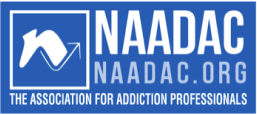 You walk into the quiet room to find your 52-year-old husband looking like a frozen statue. He is seated with his elbows flexed and fists clenched while his neck is held stiff in a bent position. He doesn’t move or speak, even when you call his name repeatedly. Attempts to touch or lightly shake him are met with no response, either. You notice that his fingernails are blue and you can’t tell if he’s breathing.
You walk into the quiet room to find your 52-year-old husband looking like a frozen statue. He is seated with his elbows flexed and fists clenched while his neck is held stiff in a bent position. He doesn’t move or speak, even when you call his name repeatedly. Attempts to touch or lightly shake him are met with no response, either. You notice that his fingernails are blue and you can’t tell if he’s breathing.
Your husband may be experiencing what’s colloquially known as the “fentanyl death pose.” It’s a form of muscle rigidity that is the result of an overdose. Despite outward appearances and the fear coursing through your veins, this condition can possibly be reversed within minutes if you call 911 immediately.
Fentanyl-related deaths in the state of Tennessee increased by 446% between 2017 and 2021. If you or someone you know are managing an opioid use disorder or showing signs of fentanyl addiction, the compassionate team at ReVIDA Recovery® can help. We specialize in treating opioid use disorders and helping people in our community reclaim their lives from addiction..
Table of Contents
What Are the Signs Of Fentanyl Death Pose?
Despite what it sounds like, the “fentanyl death pose” does not refer to a person who has died. Instead, the term describes the look of muscle stiffness that can occur with a fentanyl overdose. The fentanyl death pose can be frightening (the person may look as stiff as a statue and in an unusual position), but in many cases, medical professionals can reverse it within minutes. However, the condition may include stiffness in the airways and throat that requires advanced medical care.
The fentanyl death pose can take many forms and doesn’t always look exactly as described above. Fentanyl-related muscle stiffness in the chest and torso area may also be referred to as “wooden chest syndrome.”
Fentanyl-induced muscle stiffness, also referred to as the “fentanyl death pose” or “wooden chest,” may look different on everyone.
Common signs of fentanyl death pose or muscle rigidity include:
- Tensing in the trunk, neck, and jaw muscles
- Vocal cord closure (laryngeal spasms) in 50-100% of cases
- Decreased chest compliance
- Inability to open the mouth, clenched jaws
- Inability to breath
- Muscle rigidity in the chest wall
- Rapid onset of cyanosis
- Loss of consciousness
A person with these symptoms may be found with their eyes wide open and completely stiff, possibly unable to breathe. They may also display seizure-like behavior. If you see someone experiencing these symptoms, call 911 immediately and describe the rigidity and drug intake, since the condition requires immediate (and sometimes advanced) medical care.
If you do need to call 911, keep in mind that “fentanyl death pose” is a relatively new term mostly used in the media. It may not be a familiar term to medical professionals in your area, so you should describe all symptoms to the best of your ability and clearly convey your understanding of the person’s fentanyl intake.
How Common Is the Fentanyl Death Pose and What Are the Risks?
Fentanyl-induced muscle rigidity, also known as the fentanyl death pose or wooden chest syndrome (WCS), is a rare side effect of fentanyl overdose. WCS is well-understood by anesthesiologists because it’s a risk factor when administering fentanyl as an anesthetic during surgery.
Until now, fentanyl-related muscle rigidity from illicit fentanyl usage was extremely rare. However, the onset and severity of the condition are directly proportional to the dosage and rapidity of injection. Since illicit fentanyl contains increasingly toxic levels of the opioid, the potential for fentanyl death pose is rising and some cases have recently been recorded by first responders and other healthcare professionals.
One of the immediate risks of fentanyl-induced rigidity is that it affects the respiratory system and may interfere with a person’s ability to breathe. While proper treatment can often reverse the symptoms within minutes, advanced care is needed to react quickly in response to potential respiratory depression and airway rigidity that can make it impossible to perform chest compressions, CPR, or ventilation.
Administering naloxone is usually the first step, however, the usual dosage may cause vomiting, which is a dangerous reaction when the airways are paralyzed.
Are you concerned that calling 911 for a drug overdose might get you or your friend in trouble with the law? All 50 states and D.C. have enacted the Good Samaritan Law, which grants immunity to people who call emergency services when witnessing or experiencing an overdose.
How Is the U.S. Fighting Fentanyl-Related Deaths and the Death Pose?
Fentanyl is most often sold to unsuspecting users who think that it’s a branded medication or common street drug, such as:
- Percocet® (oxycodone and acetaminophen tablets, USP)
- OxyContin® (oxycodone HCI)
- Morphine
- Cocaine
- Methylenedioxy-methamphetamine (MDMA; ecstasy/molly)
- Heroin
For drug dealers, packing illicit substances with cheap fentanyl is a quick and easy way to increase profits. But for people ordering medications online or obtaining them from friends, classmates, coworkers, or neighbors, it can be a swift road to overdose without even knowing they’ve taken fentanyl.
“From large metropolitan areas to rural America, no community is safe from this poison. We must take every opportunity to spread the word to prevent fentanyl-related overdose death and poisonings from claiming scores of American lives every day.” – DEA Administrator Anne Milgram
For people under the age of 50, fentanyl is tied to more U.S. deaths than any other cause of death, including heart disease, accidents, suicide, and cancer. Organizations such as the CDC and DEA are working hard to educate the public on the dangers of illicit fentanyl.
Several nationwide efforts have been launched to help raise awareness of the fentanyl crisis and the dangers that surround it, including:
- National Fentanyl Awareness Day aims to raise awareness about the dangers of illicit fentanyl.
- National Fentanyl Prevention and Awareness Day™ was established in remembrance of people who have lost their lives to illicit fentanyl poisoning. Its purpose is to acknowledge the harm that the drug has done to hundreds of thousands of family and friends who’ve lost loved ones to fentanyl.
- Faces of Fentanyl, a special exhibit created by the DEA, commemorates the lives of those people lost to fentanyl poisoning.
- Facing Fentanyl™, a not-for-profit assembly of grassroots groups that advocate for fentanyl awareness. One of their current efforts is an open letter anyone can sign that urges the U.S. President to acknowledge the fentanyl crisis as a National Security threat.
Healthcare professionals are also rising to the challenge by documenting their experience, educating their colleagues, and informing their patients of the latest developments in fentanyl distribution, usage, and overdose risks.
Fighting fentanyl-related overdose and deaths relies on raising public awareness, encouraging people to contact 911 at the earliest signs of overdose, and providing compassionate but effective treatment for opioid use disorder (OUD).
Side Effects and Consequences of Fentanyl Misuse
Illicit fentanyl is an extremely dangerous drug that cannot be used safely because its toxicity puts users at high risk of overdose. Illegal drugs of any kind may contain fentanyl without the knowledge of the user or, in many cases, the drug dealer. Any time you ingest an illicit medication or drug, you risk a fentanyl overdose.
Fentanyl side effects may include:
- Hives
- Hemorrhoids
- Sepsis
- Abscesses
- Damage to opiate receptors in the brain
- Seizures
- Adrenal gland problems
- Fentanyl death pose (muscle stiffness that prevents you from moving, talking, or in some cases, breathing)
- Respiratory depression or failure
- Overdose
The severity of fentanyl’s effects varies from person to person according to your weight, frequency of use, dosage, and potency. Any time you ingest illicit fentanyl, knowingly or unknowingly, you are at high risk for overdosing.
What’s It Like to Get Treatment for Fentanyl Use Disorder?
Reaching out for treatment of fentanyl use disorder can make withdrawal safer and recovery more effective. There are many forms of treatment, including inpatient, outpatient, and medication-assisted, and treatment often includes helping you deal with the aftereffects of an OUD, such as finding employment, obtaining financial assistance, and working with the court systems.
At ReVIDA Recovery®, our professional and compassionate staff specializes in fentanyl use disorder. We treat folks as individuals and can help you create a personalized pathway that focuses on your needs. If you or someone you know is managing a fentanyl use disorder, don’t hesitate to call ReVIDA Recovery® at (844) 972-4673 to find out more.










